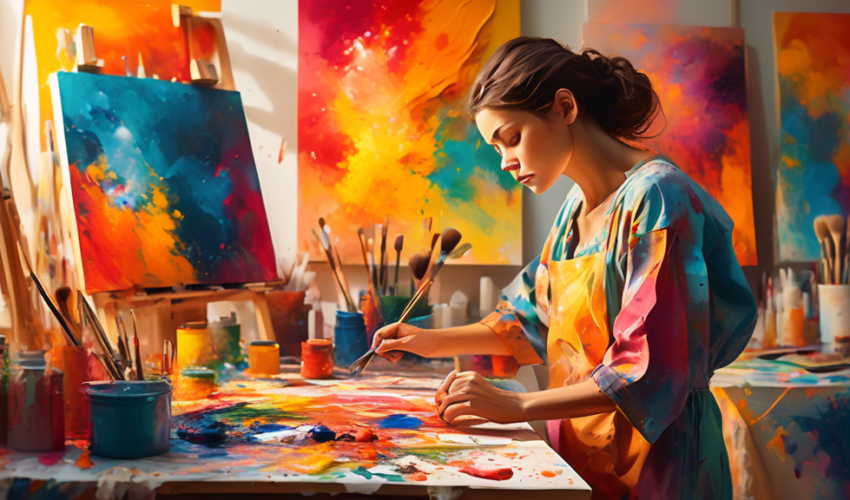Introduction to Painting Techniques
Painting is not just a process of applying pigment to a surface; it is an art form that has evolved through centuries, adopting a myriad of techniques and styles. From the traditional approaches used by classical masters to innovative methods developed in contemporary art, painting techniques define the aesthetics and functionality of the artwork. This article explores various prominent painting techniques that artists employ to bring their visions to life.
Traditional Painting Techniques
1. Oil Painting
Oil painting is perhaps one of the most renowned painting methods within the artistic community, known for its versatility and rich color depth. Artists like Leonardo da Vinci and Rembrandt extensively used this technique which involves mixing pigments with oil, typically linseed oil. The oil acts as a binder, which allows the paint to dry slowly, thereby giving the artist ample time to blend colors and create detailed textures. The viscosity of oil paint also permits the layering of paint, known as ‘glazing,’ to achieve depth and luminosity.
2. Watercolor Painting
Watercolor is a painting method in which the paints are made of pigments suspended in a water-based solution. Watercolor is best known for its transparency and fluidity. This technique demands a high level of precision as the thin layers need to be meticulously applied. Artists like William Turner utilized watercolors to achieve ethereal landscapes that seem to glow with an inner light. The technique is commonly used on paper and is valued for its portability and quick drying times.
3. Acrylic Painting
Acrylic paints are a modern painting medium made of pigment suspended in an acrylic polymer emulsion. They are water-soluble but become water-resistant when dry. This feature makes acrylics highly versatile, as they can mimic both oil and watercolor techniques depending on how they are used. Their fast drying time is advantageous for artists who work quickly or in layers. Acrylics adhere to a wide range of surfaces and can be used to create varied textures and finishes.
Experimental and Modern Techniques
1. Digital Painting
Digital painting involves creating artwork using digital tools by means of a computer, a stylus, and software. Artists can achieve effects similar to traditional materials, and have the possibility of experimenting infinitely with colors, brushes, and textures. Digital painting is becoming increasingly popular in the art world, especially for illustrators and concept artists in the digital media industry.
2. Mixed Media
Mixed media is an innovative approach that combines various painting and drawing materials and methods to create a final artwork. This technique might integrate elements such as collage, ink, pastel, and unconventional materials like paper scraps, cloth, or found objects. The result is a multi-dimensional surface that offers depth and complex composition. Mixed media challenges traditional boundaries of art-making and encourages creative problem-solving.
3. Encaustic Painting
Encaustic painting, also known as hot wax painting, involves using heated beeswax to which colored pigments are added. The liquid or paste is then applied to a surface—usually prepared wood, though canvas and other materials are often used. Metal tools and special brushes can be used to shape the paint before it cools, or heated metal tools can be used to manipulate the wax once it has solidified. This technique was practiced by Greek artists as far back as the 5th century B.C.
Choosing the Right Technique
Choosing the right painting technique depends largely on the project at hand and what the artist aims to communicate. Each technique offers different textures, drying times, and layering capabilities which can be leveraged to achieve specific effects. While the skill and preference of the artist play significant roles, the chosen surface and the desired longevity of the artwork also influence the decision.
Conclusion
Exploring different painting techniques opens up a world of possibilities for artists. From traditional oil paints to digital applications, each method offers its own unique set of qualities and challenges. Understanding and mastering various techniques not only enhances an artist’s versatility but also deepens their expressive potential, allowing them to capture their artistic vision with greater precision and creativity.

